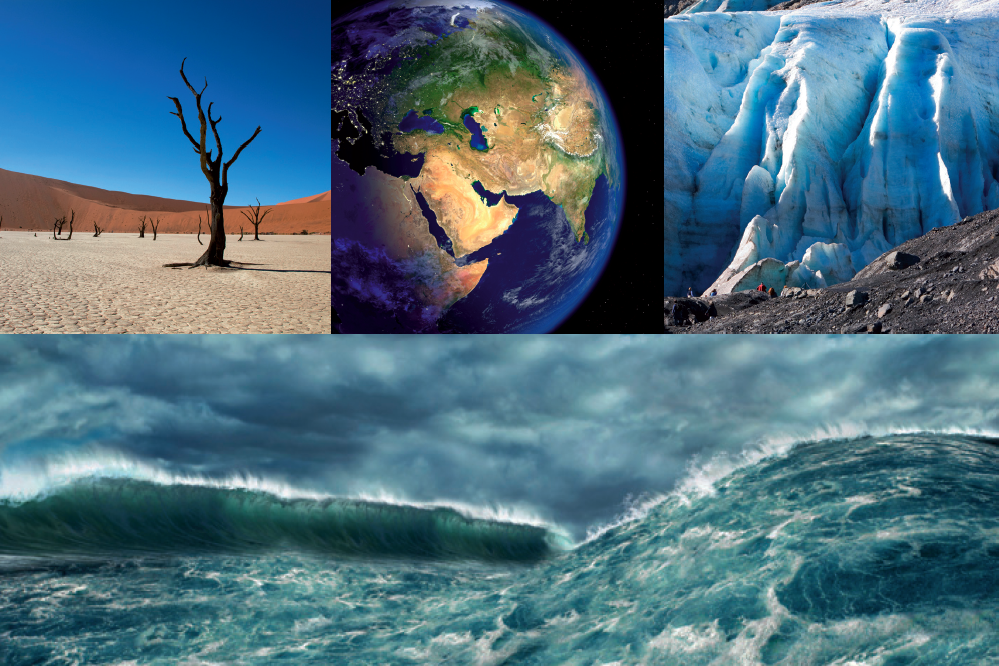The purpose of this report is to synthesize the most policy-relevant climate science published since the close-off of material for the last IPCC report. The rationale is two-fold. Firstly, this report serves as an interim evaluation of the evolving science midway through an IPCC cycle – IPCC AR5 is not due for completion until 2013. Secondly, and most importantly, the report serves as a handbook of science updates that supplements the IPCC AR4 in time for Copenhagen in December, 2009, and any national or international climate change policy negotiations that follow.
Copenhagen Diagnosis (COP15)
It is over three years since the drafting of text was completed for the Intergovernmental Panel on Climate Change (IPCC) Fourth Assessment Report (AR4). In the meantime, many hundreds of papers have been published on a suite of topics related to human-induced climate change.
This report covers the range of topics evaluated by Working Group I of the IPCC, namely the Physical Science Basis. This includes:
- an analysis of greenhouse gas emissions and their atmospheric concentrations, as well as the global carbon cycle;
- coverage of the atmosphere, the land-surface, the oceans, and all of the major components of the cryosphere (land-ice, glaciers, ice shelves, sea-ice and permafrost);
- paleoclimate, extreme events, sea level, future projections, abrupt change and tipping points;
- separate boxes devoted to explaining some of the common misconceptions surrounding climate change science.
The report has been purposefully written with a target readership of policy-makers, stakeholders, the media and the broader public. Each section begins with a set of key points that summarises the main findings. The science contained in the report is based on the most credible and significant peer-reviewed literature available at the time of publication. The authors primarily comprise previous IPCC lead authors familiar with the rigor and completeness required for a scientific assessment of this nature.
The most significant recent climate change findings are:
Surging greenhouse gas emissions:
Global carbon dioxide emissions from fossil fuels in 2008 were nearly 40% higher than those in 1990. Even if global emission rates are stabilized at present-day levels, just 20 more years of emissions would give a 25% probability that warming exceeds 2°C, even with zero emissions after 2030. Every year of delayed action increases the chances of exceeding 2°C warming.
Recent global temperatures demonstrate human-induced warming:
Over the past 25 years temperatures have increased at a rate of 0.19°C per decade, in very good agreement with predictions based on greenhouse gas increases. Even over the past ten years, despite a decrease in solar forcing, the trend continues to be one of warming. Natural, short-term fluctuations are occurring as usual, but there have been no significant changes in the underlying warming trend.
Acceleration of melting of ice-sheets, glaciers and ice-caps:
A wide array of satellite and ice measurements now demonstrate beyond doubt that both the Greenland and Antarctic ice-sheets are losing mass at an increasing rate. Melting of glaciers and ice-caps in other parts of the world has also accelerated since 1990.
Rapid Arctic sea-ice decline:
Summer-time melting of Arctic sea-ice has accelerated far beyond the expectations of climate models. The area of sea-ice melt during 2007-2009 was about 40% greater than the average prediction from IPCC AR4 climate models.
Current sea-level rise underestimated:
Satellites show recent global average sea-level rise (3.4 mm/yr over the past 15 years) to be ~80% above past IPCC predictions. This acceleration in sea-level rise is consistent with a doubling in contribution from melting of glaciers, ice caps, and the Greenland and West-Antarctic ice-sheets.
Sea-level predictions revised:
By 2100, global sea-level is likely to rise at least twice as much as projected by Working Group 1 of the IPCC AR4; for unmitigated emissions it may well exceed 1 meter. The upper limit has been estimated as ~ 2 meters sea level rise by 2100. Sea level will continue to rise for centuries after global temperatures have been stabilized, and several meters of sea level rise must be expected over the next few centuries.
Delay in action risks irreversible damage:
Several vulnerable elements in the climate system (e.g. continental ice-sheets, Amazon rainforest, West African monsoon and others) could be pushed towards abrupt or irreversible change if warming continues in a business-as-usual way throughout this century. The risk of transgressing critical thresholds (“tipping points”) increases strongly with ongoing climate change. Thus waiting for higher levels of scientific certainty could mean that some tipping points will be crossed before they are recognized.
The turning point must come soon:
If global warming is to be limited to a maximum of 2 °C above pre-industrial values, global emissions need to peak between 2015 and 2020 and then decline rapidly. To stabilize climate, a decarbonized global society – with near-zero emissions of CO2 and other long-lived greenhouse gases – needs to be reached well within this century. More specifically, the average annual per-capita emissions will have to shrink to well under 1 metric ton CO2 by 2050. This is 80-95% below the per-capita emissions in developed nations in 2000.
Links
- https://www.copenhagendiagnosis.com/
- Full report: High resolution PDF (23.3 MB)
- Full report: Low resolution PDF (3.3 MB)
- Figures: PDF (4.4 MB) – PPT (17.2 MB)
- Read report online: Flip book


